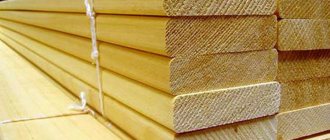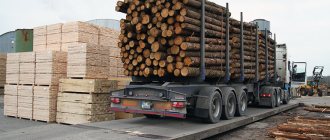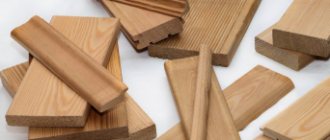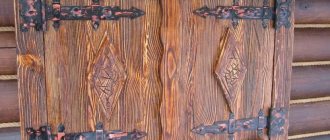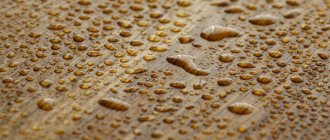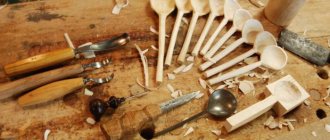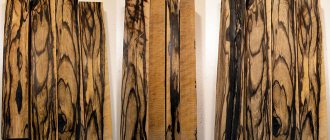Wood processing methods should be used taking into account the further purposes of this material. Thus, mechanical methods of working with future workpieces are used before impregnation and represent the sequential removal of the top layers of wood in order to achieve the desired shape. The wood is processed on four sides until a clean and smooth surface is obtained. All these operations are mechanical.
Mechanical processing of wood
Mechanical processing can be of two types. The chemical composition of wood remains the same in any case. But other changes are happening.
- Disruption of communication at the particle connection level. This means that the tree goes through stages when it is sawed, planed, milled, drilled, and chiseled.
- Without breaking the bonds between the smallest particles. These methods include pressing and bending.
The most basic method of mechanical processing of wood is sawing and cutting.
Sawing and Sawing
This is one of the most ancient types of woodworking. Initially, it was based on cutting. Later two more methods were added. So, when cutting, it is possible to divide the material into the necessary pieces, as well as remove excess length, width, and volume. The result should be a part of the required size.
The peculiarity of the process is that a gap occurs between the elements of the structure of cells and fibers of the material. There are several principles for such processing. Depending on the number of knives (cutters) taking part in this process, there are two types of woodworking.
You can cut a given material by releasing chips, namely by milling, sawing:
- planing using a cutter, the movements of which are strictly along given straight lines;
- milling, the process occurs using a cutter that continuously rotates;
- sawing wood;
- crushing, namely the development of certain holes to a given depth;
- drilling – through or partial;
- wood turning;
- peeling of workpiece elements;
- grinding.
And without chip formation, including when creating veneer and then further cutting it using scissors:
- splitting both finished pieces and whole logs;
- cutting, the process occurs using special scissors;
- stamping sheet wood using die cutting.
According to the technical conditions, mechanical processing of wood allows for some errors, including in the appearance of the workpieces. These may be internal cracks and curling at the cut site.
How a tree can be sawn is shown in the schematic drawing
Industrial Processing Technologies
Today there are three main types of wood processing:
- biological treatment,
- chemical treatment,
- mechanical restoration.
Mechanical processing of wood
The most common method of primary wood processing is mechanical impact in order to obtain valuable timber. In the process of such processing, the shape and size of the original wood raw material changes.
During mechanical processing, sawing, planing, cutting, milling, crushing, bending, and pressing of wood occur. During the work, a physical impact is exerted on the workpiece in order to change its shape. Technologists use the special quality of wood structure in the form of its ability to divide along the fibers. Mechanical processing of wood involves changing its shape through sawing, planing, milling, peeling, drilling, turning, carving, splitting and grinding.
Wood initially has excellent mechanical characteristics:
- high bending strength;
- good resistance to shock loads;
- high resistance to vibration;
- ease of processing;
- low volumetric weight;
- beautiful appearance;
- unique natural decorative effect;
- with the right processing technology, high durability;
- low thermal conductivity;
- low cost of processing on an industrial scale;
- 100 percent environmentally friendly.
Mechanically processed wood is further used for the production of building materials, the production of wood products, the production of high-quality furniture and household items.
Woodworking is performed using various woodworking tools and machines. Woodworking products: materials and semi-finished products - boards, bars, plywood, wood boards; finished products - wooden structures and structures, wagon and cooperage products, furniture, musical instruments, sports equipment, stationery, containers, pallets, etc.
Wood waste from mechanical processing is used as a raw material for the manufacture of boards and sheets, and filler for building materials. As a result of crushing, chips of different fractions are obtained - from the smallest for fiberboard to large, used for the production of wood-oriented boards.
Chemical wood treatment
Chemical methods of wood processing are widely used in the chemical industry, pulp and paper production, and hydrolysis production. Chemical treatment of wood involves changing the substance of the material.
From wood, chemical methods are used to produce: paper, cellulose, monosaccharides, glucose, xylose, charcoal, alcohols, acids, resins, raw materials for pharmaceuticals and perfumes.
To obtain valuable gaseous fuel from wood waste, the wood gasification method is used. This method is based on the process of decomposition of wood molecules and the transformation of simple substances into gas.
Biological wood treatment
Biological wood processing is today used to process waste generated during the production of timber or chemical raw materials. As a result of biological processing, it is possible to obtain valuable proteins and yeast for animal feeding and raw materials for microbiological synthesis. Sawdust, shavings and wood chips are actively used as feedstock for biological processing methods.
The simplest biological processing method is the production of valuable fertilizer - humus. In the process of such processing, shavings, sawdust and wood chips and other wood waste are decomposed under the influence of bacteria, forming a valuable product for increasing soil fertility.
The integrated use of various wood processing technologies and the use of modern technological solutions make it possible to obtain a wide range of wood products from timber and furniture to acids, varnishes, resins and fertilizers.
Woodworking tool
The tools for performing such mechanical processing of wood are as follows:
- Milling cutters. These are several cutters that allow sawing with a minimum amount of roughness. The finer the cutter, the smoother the surface. During operation, a certain amount of chips is released.
- A multiple number of cutters is already a saw. It can remove a certain amount of wood both from the top and along the edges of the workpiece.
- One cutter is a knife. With one blow it cuts the wood. As a result, there are no chips. In the factory, using high-precision tools, the surface is as smooth as possible.
Each of the cutters has a blade in the cutting edge, as well as edges (side and back). To perform the job efficiently, it is important not only to select the size of the cutters, but also to accurately set the sharpening angle and set the cutting plane. With well-sharpened cutting elements, you can achieve a fairly smooth surface even when working with small workpieces.
Open lesson on the topic “Technologies for manual processing of wood and wood materials”
Summary of an open lesson on technology within the subject week
for 5th grade students
on the topic: “Technologies for manual processing of wood and wood materials”
The purpose of the lesson:
Generalization and consolidation of students’ knowledge and skills in manual processing of wood and wood materials.
Lesson objectives:
— promote the application of acquired knowledge in practice;
— develop students’ attention, observation, ability to analyze, initiative and independence;
— promote the development of the motor sphere (mastery of small muscle motor skills when marking and sawing, connecting wood parts);
— improve environmental education of students;
- cultivate accuracy, respect for tools, and economical use of material
Lesson type:
combined.
Forms and methods
:
individual, group, pair work, frontal and independent work of students.
Lesson equipment:
computer, media projector; didactic and handout material.
DURING THE CLASSES
1. Organizational moment.
greeting, checking students' readiness for the lesson, getting students in the mood for work
2.Updating students' knowledge
Teacher
:
- Hello guys. Today we have an unusual lesson. But before we start, let's remember what we talked about in previous lessons? (students name the topics of past lessons).
Indeed, we talked about wood and working with it. What tools did we use when working with wood? (hammer, file, hacksaw, drills, plane, hammer, etc.). Can these tools be called machines? (no, these are hand tools). Today we will generalize and apply our knowledge on the topic: “Manual wood processing technology.”
The purpose of our lesson: repetition, consolidation of knowledge and the ability to apply it when performing practical work on manual wood processing.
But before starting practical work, it is necessary to review previously studied material. For your work in class, you will receive tokens of different colors (green for a complete correct answer, blue for minor inaccuracies, red for an incorrect answer). You will receive marks based on the number of tokens of one color or another at the end of the lesson.
Knowledge test (frontal):
1.What tree species do you know? (deciduous and coniferous)
2.Give examples of softwood and hardwood trees. (Soft species - linden, pine, poplar, alder, aspen; hard species - maple, acacia, oak, birch, pear)
3.What is texture? (a pattern on a cut of wood resulting from the intersection of growth rings, medullary rays and fibers).
4.What is classified as lumber? (edged and unedged boards, beams, beams, slabs).
5.Name wood materials (chipboard, fibreboard, veneer, plywood)
6.What is a sketch? (hand drawn image with dimensions)
7.What is the difference between a drawing and a sketch? (performed using drawing and measuring tools)
8.What tools are used when marking wood blanks? (pencil, ruler, tape measure, square, compass, thicknesser)
9.What types of hand saws do you know? (bow, carpentry, round)
10.What tools are used in training workshops for drilling holes? (brace, hand drill).
Teacher:
Let's remember what markings and marking material are?
On your tables there are sheets with the table “Marking and marking material”
Answer the questions posed within 2 minutes, then change sheets and check the correctness of the answers.
| № | Question | Answer Yes/No |
| 1 | Marking is the drawing of contour lines of a future product on paper. | |
| 2 | Contour lines show the processing boundaries of the workpiece | |
| 3 | The thicknesser has retractable legs without a point. | |
| 4 | A template is a sample that repeats the shape of a part. | |
| 5 | Using a small marker you can draw lines at any angle. | |
| 6 | Allowance is an excess layer of the workpiece that must be removed during subsequent processing with a cutting tool. |
On the screen there is a slide with a table and answers
We evaluate the work of our neighbor: all answers are correct - green token; 1-2 errors – blue; errors - yellow; less than three correct answers – red.
Teacher:
Next, I suggest working in groups: row on the left is group No. 1, row on the right is group No. 2. I give you cards with questions, and you must give the correct answers. The questions are defined in such a way that everyone in the group can participate. In the group, you decide who will answer what question.
Card No. 1
- List the advantages and disadvantages of wood.
- List the rules for safe work on a workbench.
- What are the stages of the technological process of manufacturing a part from wood?
- What is the difference between sawing thin and thick workpieces?
- What tools are used for tinting and varnishing wood products?
Card No. 2
- How to plan the end of a block or board so that the wood does not chip?
- How to get a blind hole of the required depth?
- List the rules for safe work with a hammer, nails, and awl.
- What types of screws and self-tapping screws do you know?
- What is the difference between a file and a rasp?
We work for 3 minutes, evaluating everyone’s answers as a whole group using tokens of different colors.
3. Practical work.
Previously, you decided on the choice of object for a creative project and the continuation of our lesson will be the practical work “Making a cutting board”.
Everyone has a technological map on the table, you can begin to complete the practical part of our lesson.
Routing.
| No. | Sequence of operations | Tools and accessories |
| 1 | Transfer the outline of the workpiece to the plywood blank | Template, simple pencil |
| 2 | Examine the markings, determine where the saw should turn | A blank of plywood with a contour applied to it |
| 3 | Prepare the sawing table and secure the file in the jigsaw frame | Jigsaw, files, sawing table, pliers |
| 4 | Cut out the outline of the product | Jigsaw |
| 5 | Clean the product with needle files and sandpaper | Needles, files, sanding paper. |
While students are performing practical work, the teacher makes targeted walks around the workplace to check:
-organization of student workplaces;
- compliance of students’ working posture with labor protection requirements;
-compliance with the order of work;
-assess students’ practical work using tokens.
4.
Summing up the lesson.
- What was the topic of our lesson today?
-What was our goal for the lesson? Have we achieved this goal?
- Let's sum up the lesson together.
— To whom and what grades would you give for the lesson? Explain why.
The evaluation criteria for the lesson based on the tokens received are presented on the slide: grade “5” - 5 green tokens; “4” - blue predominates, “3” - yellow. Grades are adjusted together with students.
5.
Homework:
repeat the chapter “Technologies for manual processing of wood and wood materials”, prepare for a test on this topic.
6. Cleaning of work places by students.
Types of cuts
After mechanical processing, lumber is obtained from the felled log. Depending on its shape, texture and size, the following types of wood cuts are distinguished:
- Tangential.
- Radial.
- Rustic.
- Transverse.
Each of the listed types is used not only based on what is planned to be obtained, but the type of tree and its structure must also be taken into account.
Diagram showing some types of cuts
Tangential and radial
Tangential cutting is carried out at a given distance from the core of the log, tangentially relative to the annual layers of the tree. After such a cut, the texture of the finished board is far from uniform.
Wood pores are possible here. Considering that wood fibers do not have one direction, tangential cutting leads to the creation of natural patterns on the plane. This cutting method is quite economical.
The useful yield of the material is one of the highest. However, the method does not exclude that the finished product will have gaps and cracks.
Radial cutting has a shrinkage coefficient twice as good as when cutting tangentially. With this method, the cutting plane is located strictly perpendicular to the annual rings. The distance between the annual layers is minimal.
And the structure at the cut site is as uniform as possible, without even minimal cracks. This cutting method is used in the technology of manufacturing laminated veneer lumber. In this case, the log is divided into 4 parts, from each of which boards are sawn off in turn.
Comparison table for cutting types
| Radial method | Tangential method |
| Improved drying performance | High mechanical characteristics |
| Same cutting structure | Geometric dimensional stability |
| High swelling characteristics | Availability of natural patterns |
| High price, wide application | Affordable price |
Rustic and cross cuts
These two methods are less popular than the above. A cross cut involves cutting the wood crosswise, and in its place concentric circles will be visible. This processing method is quite expensive, it is only suitable for certain types of wood and is used mainly when creating artistic parquet.
The rustic cutting method shows longitudinal stripes at the cut site. This method of working with wood is expensive and quite rare. Here, the presence of not only cracks and knots, but also roughness and even minor damage is unacceptable. The finished material not only has an impeccable appearance, but also high wear resistance. Used exclusively to create premium parquet.
The video will clearly show you the options for sawing wood:
Electrification of processing
The mechanization of woodworking affected both household appliances and tools. When processing wood with your own hands, the following power tools are used:
- circular and band electric saws - for longitudinal and transverse cutting of materials;
- electric jigsaw - a type of band saw - for cutting sheet material;
- electric planer and electric jointer for preliminary and final finishing by planing;
- grinding machines (belt, end);
- electric milling machine - for cutting grooves, recesses, creating shaped surfaces on the ends and planes;
- electric drill - used for drilling and reaming holes using drills, centrifuges, etc.
In addition to all of the above, to create cylindrical structures and products, wood turning is used, in which the workpiece, fixed in a chuck, rotates, and the cutter moves along the axis of rotation. This is how bodies of rotation are made: handles, racks, balusters.
Final processing and cleaning of such samples is carried out using chisels. The production of round and conical holes in wood for the further installation of building or mating elements is done by drilling. Depending on the types of holes created, there are feather, conical, spiral and other types of drills.
Wood planing
After even the most careful sawing, traces of cutting, roughness and unevenness remain on wooden workpieces. To improve the appearance and overall quality of wood, it is necessary to carry out the next stage of its mechanical processing.
The method in which layers of wood are gradually removed is called planing. With it, the products are given the desired shape with a smooth surface. You can work both on planing tools and on machines.
Stationary devices have different operating modes, as well as several speeds. The following tools can be used for manual wood processing:
- Plane.
- Jointer.
- End gouging.
- Working out a quarter with a zenzubel.
You need to work with wood on your own, planing along the grain, then you can achieve maximum smoothness of the surface with minimal effort.
When performing planing on stationary machines, safety precautions must be observed. The working methods are practically the same as when working with hand tools.
Biological method
The technology of wood processing using the biological method involves the processing of low-quality wood, as well as millions of tons of various wood and agricultural wastes into a very valuable product - feed protein yeast. In addition, during such processing, ethyl alcohol, furfural and xylitol are produced. The task of the biological method of processing timber is to provide agricultural production with the necessary raw materials for microbiological synthesis.
It is worth noting that the production of any raw material from wood is environmentally friendly.
At each woodworking, sawmill or chemical plant, the technological processing of wood is carried out strictly in stages. At each stage, the wood is endowed with certain properties that meet specific market requirements.
Turning
For wooden parts that are used to decorate furniture, a method of processing wood is used by turning it on lathes. The result is blanks and fully finished parts of oval, round, wavy, twisted and other shapes.
Stationary machines, as well as other turning devices, allow you to rotate parts evenly. At this time, knives or cutters remove chips. Machines designed for working with wood have faceplates and chucks. They have threaded holes.
The most common is the three-jaw chuck. It secures the workpiece firmly thanks to the radial movement of the clamping jaws. Using such a device you can process lightweight parts.
For heavier parts, a trident chuck is used. The teeth of the device are pressed into the end part of the part, and after turning on the machine, torque is transferred from the spindle to the workpiece itself.
In any case, you need to securely fasten the workpiece to the device. The more evenly the workpiece rotates, the better its processing will be.
The video shows how to make a chair leg on a lathe:
Principles of wood products production
When organizing a woodworking production process, a professional manager initially sets before the workers several guiding principles according to which the technological process will take place. Principles of this kind in carpentry include:
- Functionality. The product must correspond to the anthropometric dimensions of a person; this also ensures its ergonomics and ease of use.
- Rationality. When detailing, the product designer precisely calculates the smallest characteristics, which allows the use of a minimum of funds to achieve the assigned tasks.
- Operability. Of course, wood processing processes and the production of wood products in a broad sense should be focused on giving the final item an optimal set of positive “working” properties, including strength, durability, maintainability, aesthetics, durability and reliability.
Fumigation
Wood planing is its treatment with a special gas, for example, hydrogen phosphide. The purpose of the exposure is to disinfect the wood for its further safe use. The special gas has a high penetrating ability, which completely prevents the occurrence of any type of pests.
After using the gas, it is necessary to endure a processing period, after which the chemical compound will decompose. As a result, the disinfected tree is harmless to humans.
